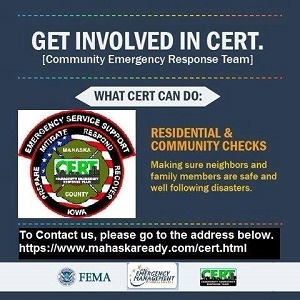School Board Members Hear Presentation On Special Education Behavioral Support System
Oskaloosa, Iowa – The Oskaloosa School System and its board of education have had many discussions over the past year about the behavior of students, particularly at its elementary locations.
On Tuesday evening, Oskaloosa schools superintendent Russ Reiter said “we’ve had some issues” with regard to student behavior. “Starting this last fall, we’ve been taking a more intense look. This past year, we made some changes.”
Those changes included the addition of a staff member in the behavioral classroom, which led to some improvement, says Reiter. “We’ve seen fewer major issues within those classrooms, but it still wasn’t where we want it to be.”
Rozanne Warder, a former Oskaloosa teacher, and 1973 graduate of Oskaloosa has since “become an expert really in behaviors and developing programs to help students,” explained Reiter.
Warder, now retired from teaching, was approached by Reiter to look over the schools’ program to determine “what additional training” staff members need.
“I’m here to share what I’d like to be able to do to give back to my community,” said Warder when she first addressed the board.
Warder says that the focus of her plan is to work “with the understanding that the work that we do as a school district is so that kids can learn.”
“The focus is not necessarily on only getting kids to behave, there’s an end to that sentence. It’s getting kids to behave so they can learn.”
“When I watched your school board meetings, and I read your notes, I know there is concern about the academic achievement of students in Oskaloosa,” added Warder, who says she knows that Oskaloosa residents will do whatever it takes, “to make our schools great.”
“There are some behavior issues and there are some things we need to deal with all districts across the country are dealing with, but we do that so kids can learn,” said Warder.
“I designed what I thought would be helpful for the students in Oskaloosa so they can learn, so they can go from being a good district to a great district,” added Warder.
Warder said she interviewed many individuals, from administration to teachers and parents, along with having five days of school and classroom observation.
“We identify the problem and we take those action steps to make good things happen,” says Warder. “We don’t admire the problems.”
Warder says that the plan would include training, onsite coaching and mentoring, workshops and school-wide professional development. “Which means, we are specially looking at behavior at this point”, added Warder.
The plan also includes some data collection so that it’s possible to determine if results are taking place.
“The program is designed specifically with students in mind, so that they can learn. So they have an academic improvement,” she remarked.
“The next thing on here has to do with the principal. And I warned the principals I was going to talk about them,” added Warder, who had held some one-on-one conversations with them, and says the plan won’t happen without the principals’ full support.
Warder said that the principals help to deliver and ensure that the delivery is made without alterations. “The quickest way for a plan or program to get turned upside down is for people to go rogue.”
“What I need is to have good relationships with the principals,” added Warder. “I need to be able to rely on them when I’m not in the building to ensure that the teachers are doing their job.”
“The role of the principal is that of an instructional leader, and the only way they can do their job, and do it well, is if they have time to be the instructional leader,” she noted.
“What I noticed was there was a bit of time, too much time, being spent on the behavior and the discipline and not enough time on instruction.” Warder went on to say that in order for academics move from good to great, time has to be made for principals to be the instructional leader.
“Part of this program includes what I call a boot camp for our principals.”
“There are components of the plan that I’ve put together to address the behavioral and mental health needs of the students in Oskaloosa that display behaviors of concern,” said Warder to board member Carl Drost.
Warder says that there are many good tools and data available to the district, but utilizing those resources will be helpful in boosting student achievement.
Warder said that the first thing on the plan is the design of a social-emotional intervention team. “It’s a group of individuals that include AEA, teachers an applied behavior analyst,” if one is available.
“Schools are not intended to be therapeutic learning centers,” she continued. “They’re intended to be teaching institutions.”
Having procedures in place that help define the tiers and move students into the appropriate category in a correct fashion “so we’re really following a plan of assistance, but we’re not delaying eligibility if necessary,” Warder said. “It’s a fine line, so it’s having those procedures that will be helpful.”
“The idea is these folks will be our coaches in the classroom.”
The plan includes several tiers, such as tier 1, which are students that are the most affected. “Those are the kids that have gone through those tiers of intervention and they didn’t demonstrate progress towards acceptable behavior.”
Tier 2 would be inclusion and working to implement a child’s behavior plan in the classroom. “If this is a kid who’s maybe got a fidget, that they use to help remind them about what they’re suppose to be thinking and doing and looking at. We’ll going to train those folks how to use that, how to document that. How to report that back,” Warder said.
Tier 3 is the least restrictive, “and that’s when they spend the most of their day in general ed. There may be some time in special ed for social skills, or it may be for reading or for math.”
“It’s an opportunity for all of us, general ed, and special education to work together to ensure that our children are successful.”
Warder says that a reduction in seclusion and restraint should be seen. “It’s not a big number.”
A reduction of in-school and out-of-school suspensions and office interventions are other points Warder believes the district will see.
Drost asked that if the programs were to implemented if “would we gain educational experience for our kids? Would we see growth?”
“My expectation is that the MAP scores will demonstrate at or above the expected growth rate,” Warder responded.
“If it reduces our behavior issues, it might decrease our open enrollment,” said Drost.
Both Reiter and Warder agreed.
Additional reporting by Ginger Allsup.















